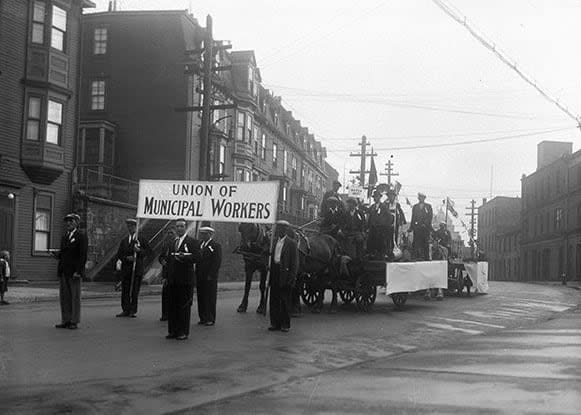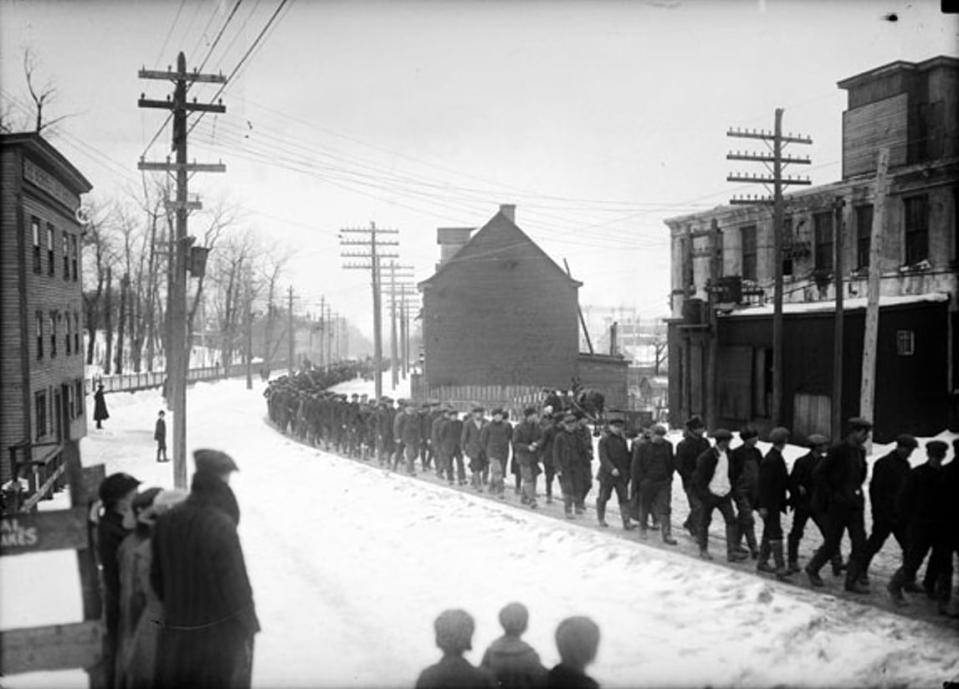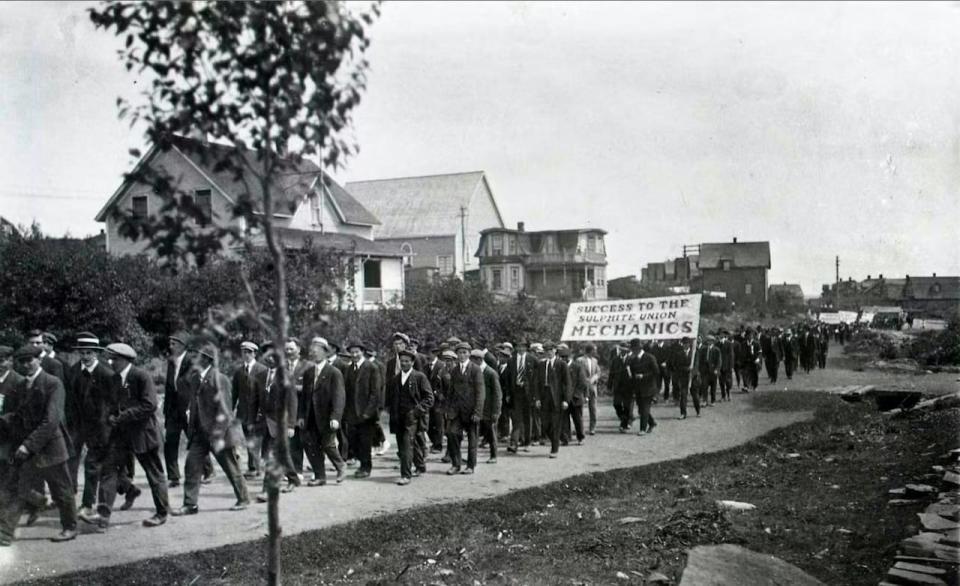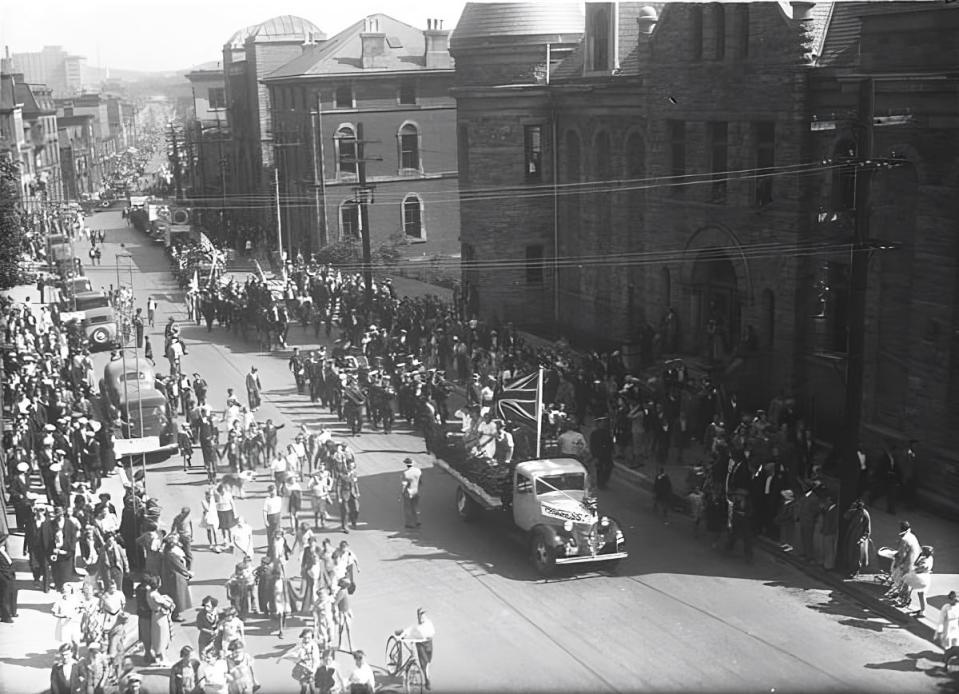Newfoundland's Labour Day has its own distinct history


Unionized municipal workers in St. John's fly their banner in the city's 1930 Labour Day parade. Courtesy of The Rooms. (Public domain/The Rooms)
It's an annual celebration of the labour movement and a day of rest from work in… July?
In Newfoundland and Labrador, we're known for doing things a little bit differently, so it should come as no surprise that Labour Day in the province has a separate history from the rest of the country.
When the Canadian government declared the first Monday in September a public holiday to honour workers in 1894, Newfoundland hadn't yet joined Confederation
and didn't participate in the festivities.
Canada's federal recognition of Labour Day was the culmination of decades of campaigning for workers' rights by trades, industrial, and mining unions, but the labour movement in Newfoundland had progressed much more slowly, in large part because Newfoundland's primary industry, the inshore cod fishery, didn't lend itself to unionization.
A long road to labour organizing in Newfoundland
Fish harvesters had common concerns. They were at the mercy of a relatively small number of wealthy merchants who set the price of cod and traded on a credit system that kept many fishing families in permanent debt.
Yet there were significant obstacles to organizing.
Most fishers weren't employees but were independent producers working out of family-owned fishing boats. They were also isolated from each other, scattered in small communities across the island and the coast of Labrador.

Thousands of striking sealers march down Water Street West in St. John's in March 1902. Courtesy of The Rooms. (Public domain/The Rooms)
As a result, the first labour organization for Newfoundland fish harvesters — William Coaker's Fishermen's Protective Union — wouldn't be established until 1908.
Instead, Newfoundland's earliest labour protests cropped up in another industry: sealing.
Unlike the inshore cod fishery, the spring seal hunt brought together thousands of men who converged on St. John's, Conception Bay and Bonavista Bay to sign on to the crews of sailing vessels bound for the offshore ice floes where seals were whelping.
Many of them would have been the same men who fished cod over the summer months, but here they were part of a community of workers, which increased their bargaining power.
In 1832, thousands of men in Harbour Grace and Carbonear refused to go to the ice unless ship owners agreed to pay them in cash instead of in kind.
They demonstrated for two months, even taking axes to a ship whose master declined to negotiate. Finally, ship owners buckled, and the fleet sailed in mid-March.
'The most interesting demonstration ever held in St. John's'
Meanwhile, skilled workers in St. John's, where greater population numbers made it easier to collaborate, began to form trade associations and, eventually, unions.

Sulphite workers from the Grand Falls paper mill march down High Street in a Labour Day parade ca. 1915. (E.I. Bishop/Grand Falls-Windsor Heritage Society)
It was one of these organizations, the Mechanics' Society, that in 1897 latched onto the new idea of Labour Day.
The previous September, the employees of Archibald's Boot and Shoe Factory had organized a private Labour Day for themselves in Harbour Grace.
According to the Harbour Grace Standard, 21 carriages decorated with flowers paraded to a picnic at Bannerman Lake, "while a fisherman's decked boot on a staff filled the place of honour in the procession."
The Mechanics' Society set its sights on a broader goal: to bring all the unions in St. John's together for a collective celebration of labourers and labour rights.
The appetite for such an event seems to have been fierce. In a little over a month, organizers planned what the Telegram called "the most interesting demonstration ever held in St. John's" (though this review couldn't be called unbiased, since the newspaper's union was among the participants).
On July 15, 1897, a parade wound through the downtown, made up of 10 floats on which each union demonstrated its trade. The moulders cast small souvenirs and tossed them to the crowd, the sailmakers crafted a gaff topsail, and the boilermakers riveted a boiler over an open fire.
The floats flew flags with mottos like "Fair Play for Honest Labour" and "Labour Conquers Everything," and between them marched bands from the Church Lads' Brigade, the Newfoundland Constabulary and the Newfoundland British Society.
The printers' float featured a functioning printing press, and Telegram staff distributed free copies of an eight-page paper labour circular called The Mechanic that they had created especially for the occasion.

The 1939 St. John’s Labour Day parade wends its way along Duckworth Street. Courtesy of The Rooms. (Public (Public domain/The Rooms)
In a scene that can hardly be imagined today, boys from the tobacco factory ran along the parade route handing out free tobacco to spectators.
Local poet Isabella Whiteford Rogerson composed some verses in honour of the affair that read, in part:
Labour and capital combined in courteous kind relation / Give peace, and wealth, and happiness, and glory to a nation / And here we have the proof today in most triumphal showing / That bloodless victories are best, to honest labour owing.
World War I leads to a change of date
Annual Labour Day festivities gradually emerged in places like Grand Falls, Corner Brook and Bell Island, too. Unlike their Canadian counterparts, these events were almost always held in July when Newfoundland weather was at its finest.
That changed, though, in 1918.
Veterans of the First World War asked that the July holiday in St. John's, which was normally observed as Labour Day, be moved to July 1 in remembrance of the hundreds of Newfoundlanders who had lost their lives on that date at the Battle of Beaumont-Hamel two years earlier.
Organizers agreed and decided to move Labour Day to another date — the first Wednesday in September.
The Newfoundland government never seems to have officially recognized Labour Day. Celebrations remained local, varying in date from town to town, until confederation in 1949, when the new province inherited Canada's national holiday.
Today, Newfoundlanders and Labradorians mark Labour Day like other Canadians, with a last hurrah of a long weekend before fall sets in. But our modern holiday owes its shape to the sealers, tradespeople, fishers, and soldiers who came before us.
Get the news you need without restrictions. Download our free CBC News app.


